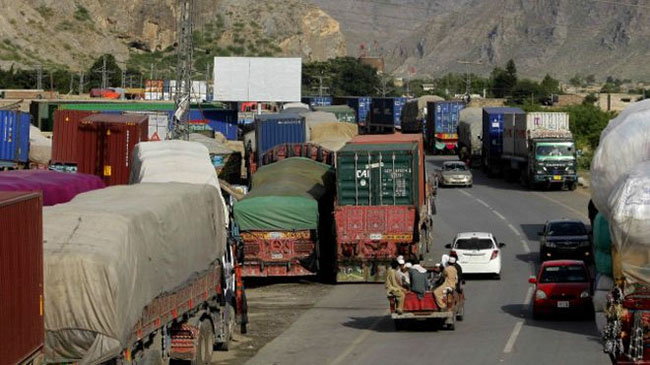Unfortunately the Afghan governments have never been able to optimally exploit the economic potential resources and opportunities have in hand. The long term insecurities, bad governance and administrative corruptions not only threaten the economic arteries of the country but also disheartened economic investment in the country. In economics, hope and faith coexist with great scientific pretension and also a deep desire for respectability which has entirely disappeared. In fact, Afghanistan has been ravaged by decades-long political conflicts that have left it economically depressed, but the country also holds a potentially huge natural resource base. Some estimates have put the value of the resources — copper, gold, coal, oil, gas, industrial minerals, rare earth minerals and more — between $1 trillion and $3 trillion. If those resources can be extracted and sold legitimately, they could help the country recover from decades of violence and allow the people to reap the rewards of their considerable natural assets. The sizable mineral and energy resources awaiting exploitation bring the possibility of thousands of new jobs and great wealth enhancement in a chronically wage-starved country.
Afghanistan abounds with untouched economic resources. In the 1970s, Soviet geologists first described the rich resources of Afghanistan. They focused on hydrocarbons — gas, oil and coal — and cooper to a lesser extent, as well as industrial mineral resources such as limestone cement and clays. However, little development of these resources occurred before war broke out with the Soviet Union in 1979. Virtually nothing happened in the decades following that war. Then, after the start of the U.S. conflict in Afghanistan in 2001, geologists from academia (including myself), the U.S. Geological Survey (USGS), the British Geological Survey, and some other geologists from NATO member countries obtained and translated old Soviet geological reports and went into the field when it was safe enough.
Over the course of the last decade, we have filled in more details of the country’s resource picture; we have found that Afghanistan’s reserves are considerably more robust than previously thought. The USGS deduced that three times more undiscovered gas and 18 times more oil exists, and that potentially extensive coal resources may exist as well. Other large copper prospects discovered recently join the major known copper prospect, called the Aynak; together these deposits have the potential to bring in tens of billions of dollars. Some of these prospects, such as one in Balkh Province, could come online in less than five years. A copper and gold deposit in Ghazni Province is estimated to be worth $30 billion and may be capable of production within one to two years. Gold deposits elsewhere are also worth billions and should be able to come online in several years. The value of lithium reserves from evaporate deposits in Herat, Ghazni, Nimruz and Farah provinces could exceed $60 billion; initial production could occur within one year, with large-scale production two to four years later. And rare earth deposits in Helmand Province are valued at $89 billion.
Development to date has been limited mostly to construction of roads and a few new buildings, along with refurbishment of factories destroyed during decades of conflict, but progress has gradually declined due corruptions and increase of war. To avert the risk of a potentially corrupt bureaucracy, new regulatory mechanisms were enacted. The government and its international partners have stressed adherence to newly written resource laws, and to the extractive industries transparency initiatives (EITI), in the hopes of controlling corruption. These measures seek to help Afghanistan escape the so-called resource curse — wherein violent struggles over the control of rich resources, such as the blood diamonds of Africa, outweigh the benefits of a country’s raw capital.
In addition, the agricultural sector will continue to be the main contributor to growth, accounting for a quarter of GDP. Agriculture is the country's main employer and 80% of the population depends on this sector. Opium production (90% of world production) is admittedly illegal, but could increase because it is highly profitable (representing about 4% of GDP). The country, which already has an arid climate, could be hit by severe drought especially as water resources are limited. Despite one of the lowest per capita incomes in the world (194th out of 213 countries according to the World Bank), household consumption levels will remain high, explained in part by revenues drawn from opium production and modest inflation relative to the 2003-2012 decade. The authorities have drawn up an action plan targeting several sectors of the economy (water management, creation of jobs outside the agricultural sector, etc.) in order to diversify and strengthen the economy. However, the lack of resources, weak governance and the country's security situation impede the operational realization of the plan's objectives. In the short and medium term, activity will depend on the authorities' ability to implement the necessary reforms (especially at fiscal level), to maintain the level of international aid and strengthen security.
Afghanistan has enough economic potentialities such as: mines, agriculture, transportation, industries, business, and etc to end the long-term dreadful economic crisis. In order to successfully exploit them Afghanistan sturdily needs security, efficient economic strategies and adopting peaceful policies against regional and international countries. There is also need of strongly fight against terrorist, opium, corruptions, discrimination and support private sectors as well learn from the similar experience encountered by other countries. The major economic operations must be monitored by credible agencies to avoid corruption, ethnic competition and other problems.
Home » Opinion » A Dose of Solution to Economic Crisis
A Dose of Solution to Economic Crisis
| Mohammad Zahir Akbari

